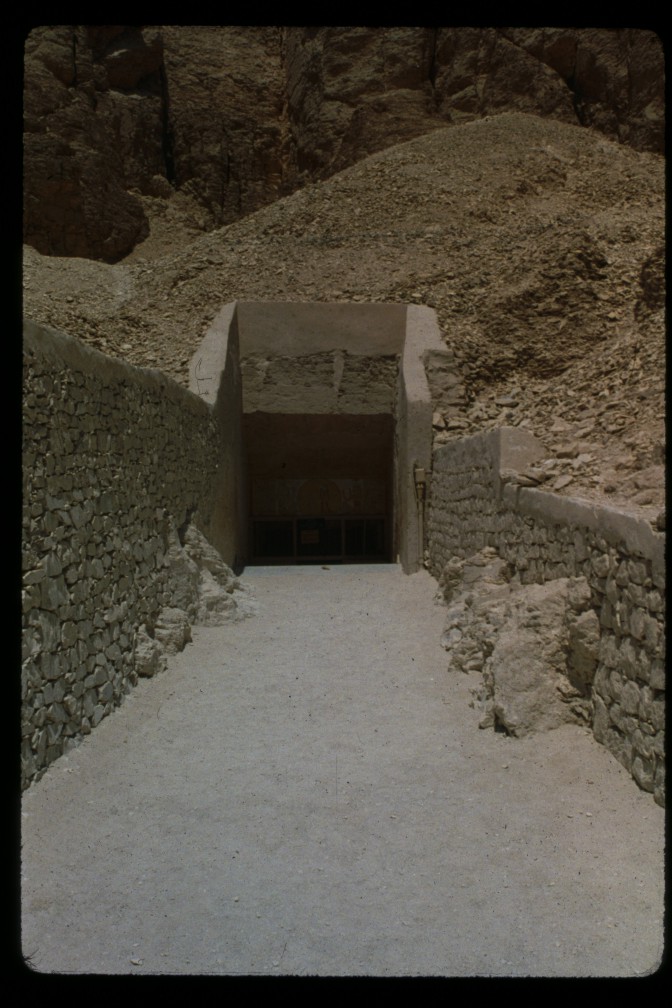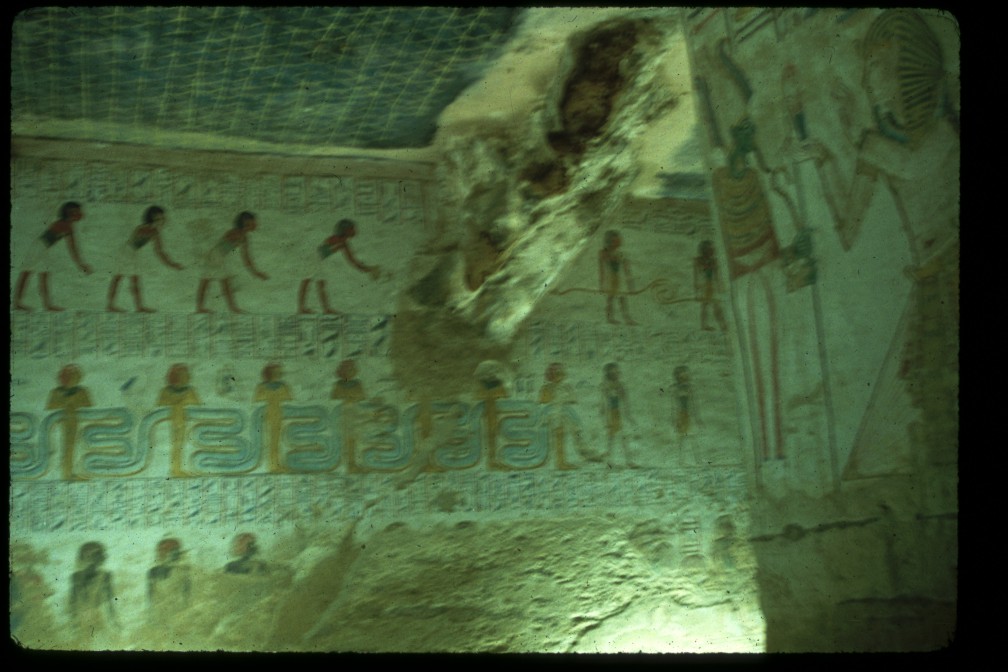Still in the Valley of the Kings. Todays photos illustrate a conservation problem and also a geologic feature that the Egyptians themselves had to contend with while building the royal tombs. Recall that the VotK is predominantly in Theban limestone which is a fairly soft, but fine grained limestone and relatively easy to work. However, as I showed in this post, scattered throughout are veins and nodules of chert/flint, a precipitate mineral. The chert is much harder than the surrounding limestone and no doubt gave the builders fits, especially when a nodule occurred in a corner. There is still another problem, but on a rather larger scale.
Faults run all through the VotK, some small, others quite large. The faults themselves can be a problem, but a secondary phenomenon comes after the faults form and they are filled with yet another nasty mineral, which I believe is quartzite. (I think I said calcite earlier, but that's retarded since calcite is soft) A typcal fault in the VotK:

Full image here.
The small ridge is the quartzite whose hardness makes it more resistant to weathering than the surrounding limestone. It's nasty hard stuff and tough to chip away at. Because of this, it's often left only partially worked. The junk coming out of the wall on the right is a fault filled with it:

Full image here.
That's the modern version. Obviously, faults don't just occur on the outside:

Full image here.
Sorry about the blurriness. I also don't have the tomb handy, so intrepid readers will have to ferret that out (Seti I?). They finally got sick of trying to cut through that junk and left it as it was. Or maybe they just ran out of time and left it as it was. Or maybe both.